|
Rev Al, Julianne Malveaux Join
the Great Debate
By Wayne A. Young
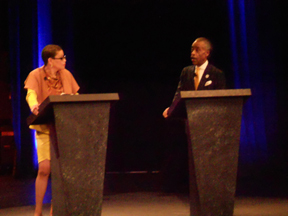 If you thought the last two Obama-Romney debates were informative and interactive, then the Emancipation Day Great Debate with Dr. Julianne Malveaux, Reverend Al Sharpton, Niger Innis and Star Parker was informative and hot. If you thought the last two Obama-Romney debates were informative and interactive, then the Emancipation Day Great Debate with Dr. Julianne Malveaux, Reverend Al Sharpton, Niger Innis and Star Parker was informative and hot.
The debate got so intense Sunday night at Washington’s Lincoln Theater, moderator Ed Gordon had to brotherly, but forcefully lay down the gauntlet. The two “liberals,” economist Malveaux and civil rights activist Sharpton clashed over politics, economics, gun control and gay rights with the two “conservatives,” civil rights activist Innis and conservative think tank founder Parker.

Interestingly, much of the debate looked back at America’s past with Reverend Al noting that Blacks in America have been enslaved longer than they have been free (244 vs. 150 years). However, when Parker attempted to downplay the role of slavery as the cause of some of the present conditions of Black America, Malveaux was not having any of it by citing a number of laws that have affected the lack of Black wealth and opportunities. She, for instance, mentioned that newly freed African blacksmiths had no right to the tools they had in slavery to make a living.
Parker opened up by saying that America has had more than 50 years of “social engineering from the left.” She and Innis called for an open dialogue and not one controlled by the left. Innis continued by urging Blacks to “emancipate your minds, your thoughts,” and called for Blacks to reevaluate their loyalty to the Democrat Party. Gordon attempted to get both sides to discuss whether the Democratic Party takes Blacks for granted and whether the Republican Party writes Blacks off. Innis wouldn’t agree, stating the “both parties are a disservice to African-Americans.”
Malveaux, however, focused on economics saying that the current system, including the tax system, “generates inequality.” She generally agreed with Sharpton’s belief that it is the government’s responsibility to “undo what government did” on a host of issues ranging from giving away land to European peasants and not the newly freed Africans in the late 1800s to enforcing segregation laws.
Parker, who sometimes seemed to confuse the audience, says she is against gun control since Blacks are just starting to exercise their Second Amendment rights to bear arms and that she fears that background checks would be a barrier to some Blacks who want to obtain a gun. “You have more mental issues if you an abortion,” she mentioned while defending her gun control position. “If you don’t like abortions, than don’t have one,” shot back Malveaux. Besides gun control and abortion, Parker denounced taxes, government regulation and gay rights.
Innis was softer on gay rights, calling for nondiscrimination, but says he is against “redefining” marriage because it could “open the door for polygamous marriages.” Sharpton defended gay rights, same-sex marriage in particular, and abortion rights by saying that even if he was against those issues on non-legal grounds, “I don’t have that right to make it law.” Malveaux, who questioned why Parker was speaking about gays as if there were no Black gays added that the right wants the government out of people’s lives, but “they just want the government in your bedroom.”
Photo top: Dr. Julianne Malveaux and Reverend Al Sharpton.
Bottom photo: Star Parker, Niger Innis, Dr. Julianne Malveaux and Reverend Al Sharpton.
|
|
Who is Kamala Harris?
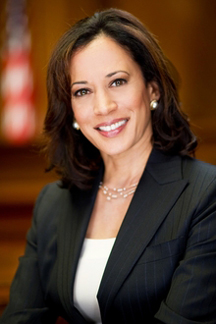 After praising Kamila Harris for her intelligence, President Obama nevertheless got in trouble for calling her the, “best-looking attorney general in the country.” However, the women of Alpha Kappa Alpha, a historically Black sorority, call the friend of the Obama’s a “soror.” After praising Kamila Harris for her intelligence, President Obama nevertheless got in trouble for calling her the, “best-looking attorney general in the country.” However, the women of Alpha Kappa Alpha, a historically Black sorority, call the friend of the Obama’s a “soror.”
The Howard University graduate is the daughter of an Asian Indian mother, Dr. Shyamala Gopalan—a breast cancer specialist who emigrated from Madras (now called Chennai), India, to the United States—and a Jamaican American father, Stanford University economics professor Donald Harris. Her mother gave birth to her in Oakland, CA. She has one younger sister, Maya Harris. The Harris sisters grew up in a household that combined Hindu and Baptist teachings.
The California bar admitted her in 1990. On January 3, 2011, Harris became the first woman, African-American, and Asian American attorney general in California and the first Indian American attorney general in the United States.
|
|
|
 |
|
|
Advertisement

|
|
Things to Do
Baltimore/Washington
Earth Day at the Botanic Garden
100 Maryland Ave, SW
Fri, Apr 19, 10a-2p, free
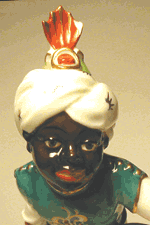
National Black Memorabilia,
Art, Doll & Collectible Show
Montgomery County Fairgrounds
16 Chestnut St.
Gaithersburg, MD
Sat, Apr 20, 10a-7p
Sun, Apr 21, 10a-5p
$7, children 16 and under free
Free off-street parking
Clybourne Park
Center Stage
200 North Calvert St.
Baltimore
Through Sun, Jun 16, $
Leroy Sylvester Robinson, Sr.
Anacostia Art Gallery and Boutique
2806 Bruce Place, SE
Washington, DC
Sat, Apr 20 and Sun, Apr 21, free
Chicago/Gary
Green Gary Celebration
Marquette Park and
Paul H Douglas Center for
Environmental Education
Lake Street, Gary, IN
Sat, Apr 27, 10a-3p, free
Family Day at the Douglas Center
Wild About Water
Paul H Douglas Center for
Environmental Education
Lake Street, Gary, IN
Each Sat Starting May 4,1p-3p, free
New York City (Greater)
The Harlem Chamber Players
join
Opera Ebony &
Opus 118 Harlem School of Music
Aaron Davis Hall 138 Convent Avenue
(West 135th Street and Convent Avenue)
New York, NY 10031
Sun, Apr 21, 4p, $15 and $25
Hampton, VA
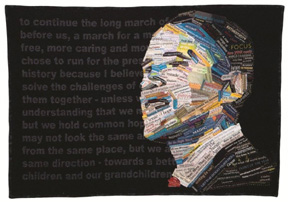
The Journey of Hope in America:
Quilts Inspired by President Barack Obama
Hampton University Museum
11 Frissell Avenue
Hampton, VA
Fri, Apr 26- Sun, Aug 24, Mon -Fri 8a – 5p, Sat Noon- 4p, free
Closed major and holidays campus
|
|
Fair Housing Celebration Highlights the Value of Thriving Communities
The Poverty & Race Research Action Council has issued a press release about the HUD Fair Housing month event that celebrated the settlement of a major housing discrimination case in Baltimore, MD.
The release details how the lives of three African American women and their families changed dramatically after they moved from inner city housing projects to housing in “opportunity neighborhoods.” (This is the first in a series of three articles to run in this edition and the following two editions of Snippets).
Photo: Beneficiaries of the Thompson settlement speaking at a HUD ceremony. Left to right, Nicole Smith, Michelle Green, Sabrina Oliver and Tameka Johnson. Barbara Samuels, Fair Housing Managing Attorney at ACLU of Maryland, is on the far right
Nicole Smith’s Story
Nicole Smith moved from a segregated neighborhood in Baltimore to Howard County, a wealthy, diverse community outside the city. She had lived in three different public housing projects as a child - Cherry Hill, Murphy Homes and Westport. She and her mother later purchased a house in a struggling neighborhood, but even though they both had full-time jobs, they lost the house in a foreclosure.
“My name finally came to the top of the public housing waiting list in 2007,” Smith said. “I knew what to expect in public housing: drugs, violence, crime and poor housing. The Thompson voucher, on the other hand, would give me an opportunity to move to neighborhoods that I would not otherwise have access to…it provided a way out for my 11 year-old son and me.”
She said counselling helped her improve her credit and she was able to find a home in Columbia, Maryland. “I truly feel like a part of the community,” Smith said. “After moving through the program, I was able to get a job working for Howard County schools in their Before and After Care program and was just promoted to Assistant Director. I also enrolled in Howard County Community College and I am studying early childhood education. I hope to be able to go on to receive a bachelor’s degree in order to become an elementary school teacher.”
She said the move to Columbia made this possible.
“In the city, I did not want my son to play outside, he didn’t have many friends and he struggled in school,” Smith said. “Here, he is doing very well in school and our neighbors are welcoming -- often picking him up after school while I’m working and arranging play dates and carpools. On his birthday, for the first time in his life, I was able to give him a birthday party at a local park. So many kids and parents came from the neighborhood and from his school to show their support for him. It was very moving to see how many friends he had of all different colors and cultures. The feeling of love and support from a diverse community is what fair housing is all about. I hope all people will be able to experience it one day.”
|
|
|
 |
Participants Have Fun
Making Homes into Castles
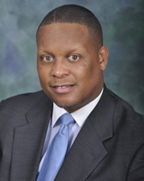 Architect James Jordon (left) kicked off the two hour Build / Renovate Your Own Castle event by explaining the role an architect plays in the building of a person’s “castle.” Generally, there are four phases of a project: Design, Construction Documents, Permit and Construction. However, he warned that not all architects are willing to provide the same level of service through each phase. For instance, some architects will have the homeowner obtain the government permits, but that can be problematic for the homeowner who would have very little experience navigating the permit system. Jordon added, “It’s an activity that a person may do only once in their lifetime.” Architect James Jordon (left) kicked off the two hour Build / Renovate Your Own Castle event by explaining the role an architect plays in the building of a person’s “castle.” Generally, there are four phases of a project: Design, Construction Documents, Permit and Construction. However, he warned that not all architects are willing to provide the same level of service through each phase. For instance, some architects will have the homeowner obtain the government permits, but that can be problematic for the homeowner who would have very little experience navigating the permit system. Jordon added, “It’s an activity that a person may do only once in their lifetime.”
No project can get off the ground without money, and lender Noel Shepherd spoke on different financing options from a home equity loan to a construction loan. The Citibank loan officer suggested that once you speak with an architect and set a budget, then you should speak to a lender. Compared to the housing boom years, he warned that lenders now require “lots of documentation.”
POH contributor Sherry Ways ended the session by raising the awareness of decorating elements including line, shape, texture, space and color. When asked how often a person should paint their interior, she replied, “every five to ten years.”
The ache for home lives in all of us, the safe place where we can go as we are and not be questioned.
- Maya Angelou
|
|
The Most Popular Headlines and Links
from the Last Snippets
|
|
|

|



 Best known for her ground-breaking role as the foxy Thelma in the 70s hit television series Good Times, Brooklyn native Bern Nadette Stanis is still turning heads in the inspirational play Behind the Pulpit. For the past year Stanis has portrayed Debra, the wife of the pastor at the Come & Go Baptist Church. I recently chatted with Stanis about the play, her career, finding a mate and her current writing projects.
Best known for her ground-breaking role as the foxy Thelma in the 70s hit television series Good Times, Brooklyn native Bern Nadette Stanis is still turning heads in the inspirational play Behind the Pulpit. For the past year Stanis has portrayed Debra, the wife of the pastor at the Come & Go Baptist Church. I recently chatted with Stanis about the play, her career, finding a mate and her current writing projects.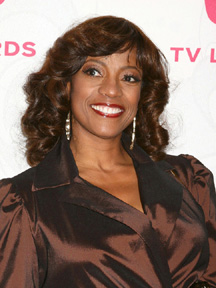 Later, she was selected to portray Thelma, the teenage daughter of James and Florida Evans. Beloved by many, Stanis enjoyed a successful run on Good Times from 1974 to 1979. She has since played many roles – wife, mother, painter, producer, poet, Broadway actress and author. She has also appeared in Broadway’s
Later, she was selected to portray Thelma, the teenage daughter of James and Florida Evans. Beloved by many, Stanis enjoyed a successful run on Good Times from 1974 to 1979. She has since played many roles – wife, mother, painter, producer, poet, Broadway actress and author. She has also appeared in Broadway’s 
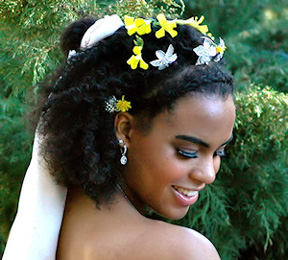 Jayme Goodwin won the America’s Next Natural Model 2013 contest sponsored by
Jayme Goodwin won the America’s Next Natural Model 2013 contest sponsored by  If you thought the last two Obama-Romney debates were informative and interactive, then the Emancipation Day Great Debate with Dr. Julianne Malveaux, Reverend Al Sharpton, Niger Innis and Star Parker was informative and hot.
If you thought the last two Obama-Romney debates were informative and interactive, then the Emancipation Day Great Debate with Dr. Julianne Malveaux, Reverend Al Sharpton, Niger Innis and Star Parker was informative and hot.
 After praising Kamila Harris for her intelligence, President Obama nevertheless got in trouble for calling her the, “best-looking attorney general in the country.” However, the women of
After praising Kamila Harris for her intelligence, President Obama nevertheless got in trouble for calling her the, “best-looking attorney general in the country.” However, the women of 


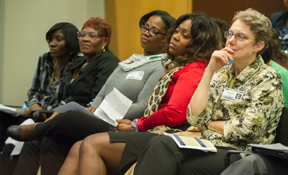
 Architect
Architect 